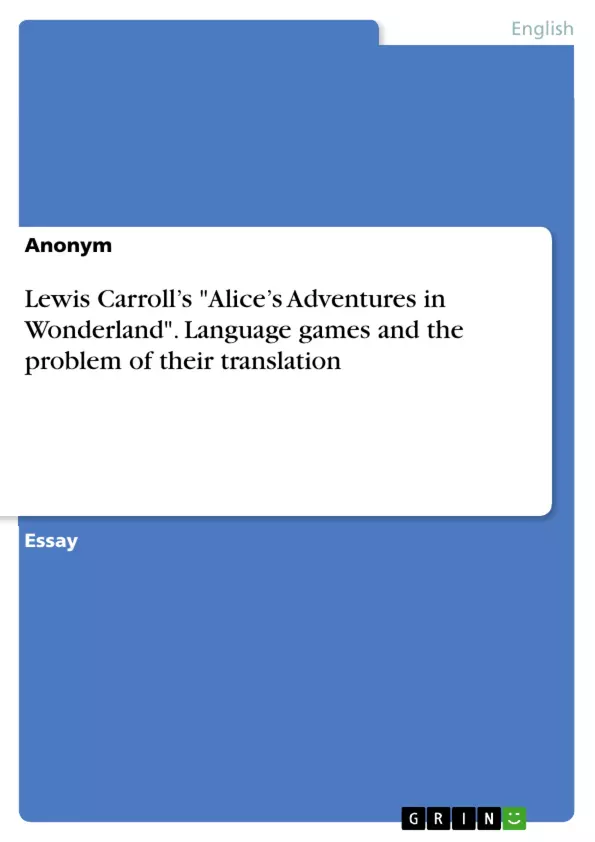Lewis Carroll’s "Alice’s Adventures in Wonderland" is one of the great pioneering figures of nonsense fantasy and undoubtedly a classic of Victorian children’s and youth literature. To this day, the story fascinates not only young people, but also adult readers. One reason for the long-lasting success is the complexity of Alice, which allows viewing the plot from various perspectives, such as political, philosophical and even logical or physical perspectives.
Therefore, it is not surprising that Alice’s Adventures in Wonderland after first being published in 1865, has never been out of print (cf. “What’s so wonderful about Alice?”). Another reason for this success of Alice’s Adventures in Wonderland is the language used and its humorous effect. The novel is embedded with both obvious and hidden wordplays, neologisms, syllogisms, well-known poems, nursery rhymes of the time and the assumption that word meanings can be chosen arbitrarily.
Inhaltsverzeichnis (Table of Contents)
- Language games in Lewis Carroll's Alice's Adventures in Wonderland and the problem of their translation
- Figures
- Chapter Headings
- Parodies of poems
- Conclusion
Zielsetzung und Themenschwerpunkte (Objectives and Key Themes)
This essay examines the challenges of translating language games in Lewis Carroll's Alice's Adventures in Wonderland, focusing on the German translation by Antonie Zimmermann. The analysis aims to identify and explain the difficulties in translating key elements like proper names, chapter headings, and parodies of poems, while exploring the possibilities and limitations of achieving accurate and enjoyable translations.
- Translation challenges of proper names and their cultural references
- Difficulties in translating chapter headings with puns and idioms
- The problem of translating parodies of poems and preserving their intertextuality
- The impact of cultural differences on translation effectiveness
- The importance of understanding the original text for appreciating its nuances in translation
Zusammenfassung der Kapitel (Chapter Summaries)
The essay begins by introducing Alice's Adventures in Wonderland as a classic of Victorian children's literature and outlining the challenges posed by its language games for translators. The focus shifts to analyzing the difficulties of translating proper names like Dodo, Cheshire Cat, Mad Hatter, and March Hare, due to their reliance on English idioms and cultural references. The author explores Zimmermann's translation choices for these names, highlighting both successful and less successful attempts to convey the original meaning.
Next, the essay examines the challenges of translating chapter headings, particularly those containing puns and expressions like “Caucus-Race” and “Long Tale”. The analysis highlights the difficulties in preserving both the literal meaning and the intended humor of these headings in the German translation. The author then delves into the complex issue of translating parodies of well-known poems, using the example of “Twinkle, Twinkle, Little Bat” and Zimmermann's German translation of it as a parody of a German Christmas carol. The essay discusses the loss of context and intertextuality in this translation and explores alternative approaches that could have preserved the original intent.
Schlüsselwörter (Keywords)
This essay focuses on the translation of Lewis Carroll's Alice's Adventures in Wonderland, exploring the challenges of translating language games, proper names, chapter headings, and parodies of poems. The analysis highlights the impact of cultural differences on translation accuracy and the importance of preserving intertextuality and humor in translations. Key terms include: translation, language games, proper names, chapter headings, parodies, intertextuality, cultural references, and the German translation by Antonie Zimmermann.
- Quote paper
- Anonym (Author), 2019, Lewis Carroll’s "Alice’s Adventures in Wonderland". Language games and the problem of their translation, Munich, GRIN Verlag, https://www.grin.com/document/489032



